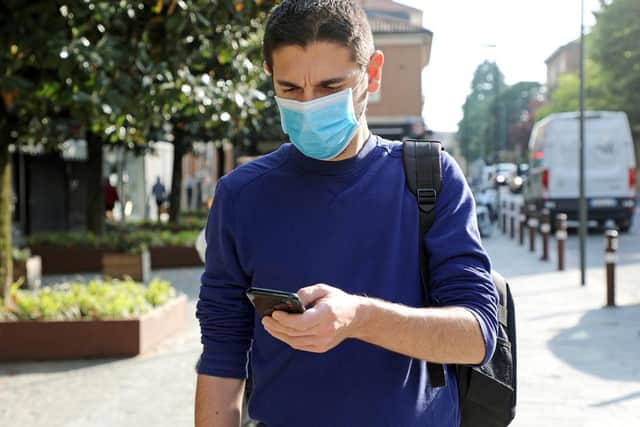Coronavirus track and trace: how UK government’s Covid-19 system works - and how to download the app
and live on Freeview channel 276
As part of measures to help control the spread of coronavirus, the UK government has introduced a track and trace system.
The new NHS Test and Trace scheme launched in England on 28 May, with thousands of contact tracers now making phone calls to people deemed at risk of coronavirus infection.
Advertisement
Hide AdAdvertisement
Hide AdThis was followed by the launch of the Covid-19 contact tracing app, launched on 24 September in England and Wales, which tells epople to self-isolate if their phone detects they have been in close contact with someone who has tested positive for coronavirus.


What is the test, track and trace system?
Contact tracing is a long and laborious process that has been likened to detective work.
It is carried out by public health officials and involves interviewing a patient to identify anyone who they have recently had close contact with.
Health officials then alert these people that they may have been exposed to a virus, and often encourage them to quarantine themselves so as to avoid any further spread.
Advertisement
Hide AdAdvertisement
Hide AdContacts who are considered to be particularly high risk are intensely monitored to identify any signs of infection.
Such a tracing system is used to help slow the spread of infectious diseases and has been implemented in several countries, including Hong Kong, Singapore and Germany.
How does the Test and Trace scheme work?
The new NHS Test and Trace scheme is now up and running in England, with the help of 25,000 contact tracers.
Under the new system, NHS tracers, or local public health teams, will text, email or call people who test positive with coronavirus and ask them to share details of those they have been in close contact with, along with places they have visited.
Advertisement
Hide AdAdvertisement
Hide AdThese contacts will then be considered to be at risk of infection and be instructed to self-isolate at home for 14 days as a result, even if they are not displaying any symptoms. Anyone who has already had the virus will also be asked to self-isolate.
The first figures from the tracing scheme revealed that two-thirds of the 8,000 people in England who have tested positive for coronavirus have provided details of people they have been in contact with. As a result, nearly 27,000 people were since told to self-isolate.
When did the app launch?
Despite the NHS Test and Trace system rolling out in England on 28 May, the accompanying app faced several weeks of delays and only recently launched on 24 September in England and Wales.
The app began trials on the Isle of Wight on 5 May and the government initially hoped the system would be ready to be used more widely across England in June, but this target failed to be met meaning it could not launch at the same time as the Test and Trace system.
Advertisement
Hide AdAdvertisement
Hide AdNorthern Ireland launched an app in July, while Scotland also launched an app in September.
How do I download it?
Since the app launched, it was downloaded 14 million times in its first week and can be used on any smartphone, but not on tablets, smartwatches or other devices.
To download it, simply visit Android's Google Play or Apple's App Store, search for "NHS Covid-19" and press “install”.
The app can detect when a fellow user is nearby via Bluetooth. If the two phones are near each other for long enough, and one of the two users later shares a positive coronavirus test via the app, the other user will receive an alert telling them to self-isolate.
Advertisement
Hide AdAdvertisement
Hide AdIt will also help to identify the close contacts of a user who tests positive, or visitors to a premises where there has been an outbreak.
Users can also use the app to check in at various venues, including shops, bars, restaurants or places of worship. Hospitality venues, such as pubs and restaurants, have been asked to display posters with a QR code, which app users will be able to scan on entry.
